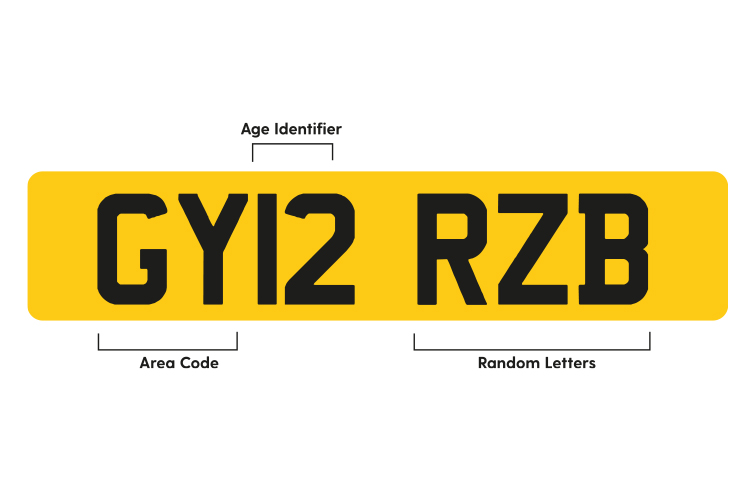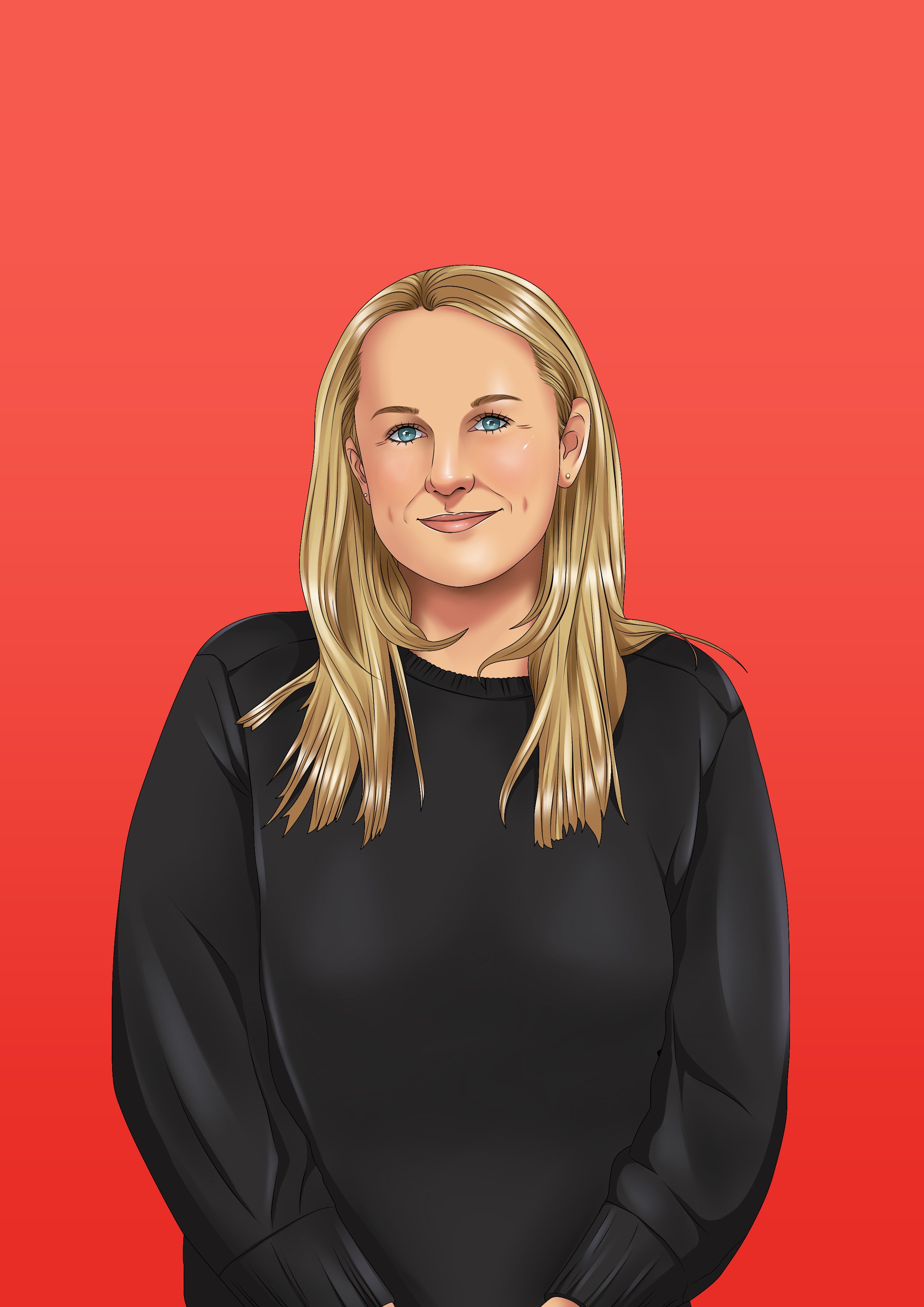Number plates are an essential part of vehicle identification. With various styles and options available, it can be confusing to know what's legal and what's not.
This comprehensive guide will help you navigate the complex world of UK number plate laws, ensuring your vehicle remains compliant with current regulations.
Table of Contents
Legal Number Plates
Legal number plates in the UK must adhere to strict regulations set by the Driver and Vehicle Licensing Agency (DVLA).
These plates must be made from reflective material and display black characters on a white background for front plates, and black characters on a yellow background for rear plates.
The characters must not be removable or reflective, and if fitted after September 1, 2021, they must be a single shade of black.
All legal plates must be marked with the British Standard number. For plates fitted after September 1, 2021, this is 'BS AU 145e'. For plates fitted before that date, the standard is 'BS AU 145d'.
All plates must include the name and postcode of the supplier. The character font used must be the standard 'Charles Wright' font, with specific height, width, and spacing requirements.
For vehicles registered after 01 September, the mandatory format is two letters (area code), two numbers (age identifier), and three letters.
Certain stylistic elements are permitted, such as 3D effect characters, as long as they don't interfere with the plate's readability.
Zero-emission vehicles are allowed to display a green flash on their plates. It's crucial to note that while personalised plates are legal, they must still conform to all standard number plate regulations. Failure to comply with these laws can result in fines of up to £1,000 and potential MOT failure.

Legal Number Plate Styles
When it comes to legal number plate styles in the UK, there are several options available:
4D Plain Number Plates:
4D plain number plates are a modern style of vehicle registration plate characterised by their three-dimensional raised characters, typically made of acrylic or similar durable plastic, which are affixed to a flat background plate.
These number plates should adhere to all the rules mentioned above for the legal number plates, not adhering to the DVLA regulations can render the plates illegal./p>
Overall these hand-laser cut plates provide a clean, sleek look.
4D Matte:
4D matte number plates raised characters like standard 4D plates, but with a non-reflective or "matte" finish on the characters. The background remains reflective as required by law. This creates a distinctive appearance where the characters appear to stand out against the reflective background.
Not adhering to the DVLA principle about number plates can make these number plates illegal. If the matte finished characters are not securely attached or alter the plate's overall structure, it would be illegal. Any attempt to use the matte finish to alter or obscure the true registration number is illegal.
5MM / 5MM Gel:
The 5MM or 5MM Gel plates are an evolution of the 4D design, pushing the three-dimensional effect even further.
These plates feature characters that protrude a full 5mm from the surface, using a gel-like acrylic material that gives them their alternative name. The increased depth creates a more dramatic visual impact compared to standard 4D plates, potentially offering increased durability due to the thicker material.
Their legal status can be more contentious than standard 4D plates because of the extreme design. Installation requires careful fitting to ensure the extra depth doesn't interfere with the plate's mounting or the vehicle's bodywork.
Pressed:
Pressed plates represent a traditional and widely accepted form of number plate in the UK. In this style, the characters are pressed or embossed into a flat metal or plastic plate.
All pressed yellow (rear) and white (front) plates are legal for modern vehicles in the UK, offering a classic, slightly raised letter effect without the dramatic 3D appearance of 4D or 5MM plates.
These can be made of metal or plastic, with metal being more traditional and durable. While the basic design is standard, there can be variations in the pressing depth and character edge definition. Typically, the entire plate, including characters, is reflective, meeting legal requirements.
Shaped:
Shaped plates are designed to fit specific vehicle models, offering a more integrated look. These plates are contoured or shaped to match the curvature or design of particular vehicle models, enhancing the overall aesthetic of the vehicle by following its body lines.
While road legal and MOT compliant, they must still adhere to all DVLA regulations regarding character size, spacing, and reflectivity. Shaped plates are usually made of flexible materials to allow for curved designs, and each design is typically only suitable for a specific make and model of vehicle.
This custom fitment ensures they sit perfectly in the plate recess of particular vehicle models, creating a seamless look.

Illegal Number Plates
While the UK's number plate regulations may seem straightforward, many vehicle owners unknowingly fall into the trap of displaying illegal plates.
Illegal number plates come in many forms, often stemming from attempts to personalise or stylise the plate beyond legal limits.
What Makes A Number Plate Illegal?
- Non-Standard Character Spacing: Altering the spacing between letters and numbers to create words or phrases is illegal. Characters must be displayed in the prescribed format without manipulation.
- Incorrect Font: Only the mandated 'Charles Wright 2001' typeface is permitted. Any other font, including stylized or decorative lettering, is illegal.
- Wrong Colours: Front plates must have black characters on a white background, while rear plates require black on yellow. Any deviation from this colour scheme is unlawful.
- Reflective or Removable Characters: Characters must be non-reflective and permanently affixed. Plates with reflective or removable letters and numbers are illegal.
- Background Patterns or Designs: Number plates must have a plain background. Any patterns, textures, or images behind the characters are prohibited.
- Unapproved Flags or Emblems: While certain national flags and identifiers are allowed, any other graphics, logos, or emblems are illegal.
- Misrepresented Registration: Displaying a registration number that doesn't belong to the vehicle or altering the plate to misrepresent the actual registration is illegal.
Consequences of Using Illegal Number Plates
- Fines: Drivers caught with illegal plates can face fines of up to £1,000.
- MOT Failure: Vehicles with non-compliant plates will automatically fail their MOT test.
- Registration Number Withdrawal: In severe cases, the DVLA may permanently withdraw the vehicle's registration number.
- Insurance Implications: Using illegal plates could potentially invalidate your car insurance.
Common Misconceptions
- "Slight" Modifications are Okay: Even minor alterations to spacing or font can make a plate illegal.
- Old Vehicles are Exempt: While some classic vehicles can use certain vintage-style plates, they must still comply with current legibility standards.
- Private Plates Have Different Rules: Personalised number plates must adhere to the same regulations as standard plates.
3D and 4D Number Plates
3D and 4D number plates are trending in the UK car scene. They offer a cool, eye-catching look for vehicles without breaking any rules. These plates add depth and style to a car's appearance, making it stand out on the road while staying fully legal.
3d Plates and its Key Features
3D number plates have slightly raised black letters and numbers stuck onto the plate, creating a eye-catching look while following the rules.
- Characters are raised approximately 1-3mm from the plate surface.
- Made from acrylic material bonded to the reflective background.
- Compliant with UK regulations when properly manufactured.
4D Plates and Its Key Features
4D plates have even taller letters and numbers that stick out more, sometimes with coloured edges, making them really pop out from the plate.
- Characters are raised 5mm or more from the plate surface.
- Often use a thicker, gel-like acrylic material for characters.
- May include colour-coded edges on characters (within legal limits) .
- Provide a more dramatic 3D effect compared to 3D plates.
Legal Considerations of 3d and 4D Plates
Both 3D and 4D number plates can be legal in the UK, provided they meet all other DVLA requirements for character font, size, spacing, and overall plate dimensions.
The raised characters must not interfere with the plate's reflective properties or legibility. It's crucial to purchase these plates from authorised suppliers to ensure compliance.
Following are the key points to remember in terms of their legalities
- Characters must still conform to the mandated 'Charles Wright 2001' font.
- Spacing and size regulations apply, regardless of the 3D effect.
- The plate's reflective background must meet British Standard requirements.
- Any coloured elements (like character edges) must not affect overall legibility.
While 3D and 4D plates offer an attractive option for vehicle owners looking to enhance their car's appearance, it's essential to ensure that the chosen design complies with all current UK regulations. As with any number plate, using non-compliant 3D or 4D plates can result in fines and other penalties.
When considering 3D or 4D plates, always purchase from a Registered Number Plate Supplier (RNPS) and verify that the plates meet the latest British Standard (BS AU 145e as of September 2021) to avoid any legal issues.
Common FAQs About Number Plates in the UK
What makes a number plate illegal in the UK?
Illegal number plates may have incorrect spacing, use unapproved fonts, display unauthorised symbols or flags, have reflective characters, or use tinted covers that affect visibility.
Can I use a number plate frame in the UK?
Number plate frames are legal in the UK as long as they don't obscure any part of the registration number or interfere with the plate's reflectivity.
Are personalised or "vanity" plates legal in the UK?
Personalised number plates are legal in the UK if they are officially issued by the DVLA and conform to all standard number plate regulations.
Why are UK number plates yellow and white?
Front plates are white and rear plates are yellow to help other road users quickly identify which direction a vehicle is facing, especially in low light conditions.
What are the current number plate rules in the UK for 2024?
The current rules, effective since September 2021, require plates to meet the British Standard BS AU 145e, which specifies sizing, fonts, and the need for a supplier's business name and postcode on the plate.
Are raised (3D) letters legal on UK number plates?
Raised or 3D letters are legal on UK number plates as long as they comply with all other DVLA regulations regarding font, size, and spacing.
Can I use custom fonts or styles on my number plate?
No, only the official Charles Wright font is legal for use on UK number plates. Custom fonts or styles are not permitted.
What is the correct format for UK number plates?
The current format is two letters (area code), two numbers (age identifier), and three random letters. For example: AB51 CDE.
Motorfinity
At Motorfinity, we pride ourselves on offering exclusive discount across all makes and models. Whether you're looking for efficiency, style, or cutting-edge technology, our selection is designed to meet every need.
You can choose from Personal Contract Purchase (PCP), Hire Purchase (HP), and leasing deals. Each option provides flexibility and benefits tailored to different driving habits and budgetary needs.
Are you eligible?
Our nations Armed Forces, Veterans, Emergency Services, NHS, Police and Prison Services, the Education and Social Care sectors and more form our eligible audience.





